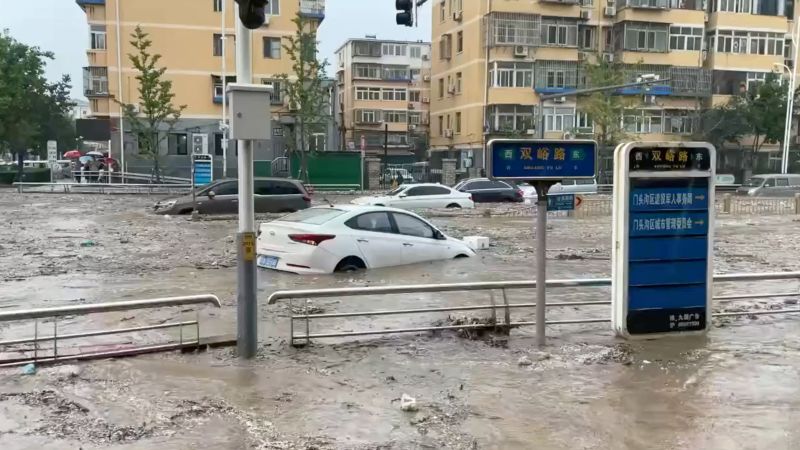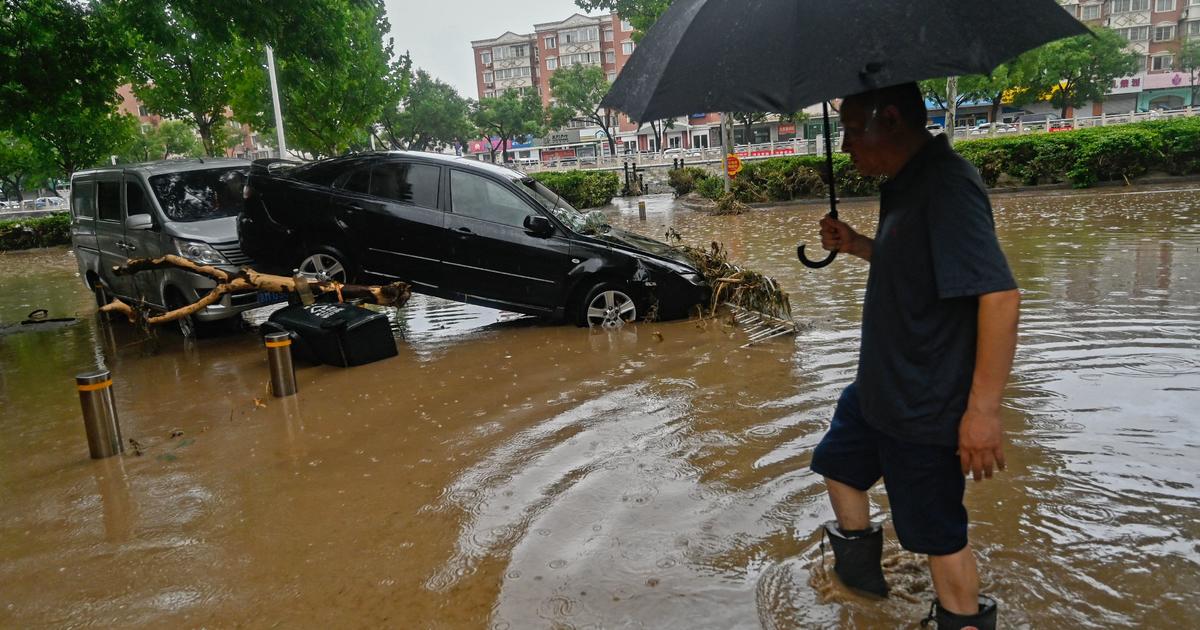Typhoon Doksuri, one of the most strong storms to hit China in years, has unleashed devastation across the nation, leaving boundless flooding, disarray, and fatalities in its wake. As the remainders of the previous super-typoon moved northwards, it released heavy rains areas of strong winds and that crushed urban communities and regions in its way.
The capital city of Beijing has been seriously impacted, with no less than two reported dead and over 31,000 individuals compelled to empty their homes. The circumstance has become dire, prompting the issuance of red alerts and urging citizens to stay indoors.

Also Read: Central Russia:10 Dead, Including 3 Children as Strong Winds hit Tourist Camp
Sources Related to Floods and Storms in July and August Around the World (For R&D)
- China floods: Xi Jinping urges action as rains kill 15 and displace thousands
- At Least 1 Dead as Heavy Rains Set Off Flash Flooding in New York
- Mongolia – Floods
- Assam Floods: About 18,000 People Suffer From Terrible Flood In Dhemaji District
- At least 50 dead in Pakistan monsoon floods since end of June
- New Delhi Floods: Deadly Monsoon Rains, leaving 15 Dead
- Japan Floods: Heavy Rains Causes Floods and Landslides, 1 Dead
- South Korea Floods: At Least 26 Dead and Over 1000 Evacuated
- Central Russia:10 Dead, Including 3 Children as Strong Winds hit Tourist Camp
Beijing Faces the Typhoon Doksuri
As Typhoon Doksuri made landfall in Fujian Region on Friday, it started its rampage towards the capital city, Beijing. The storm brought steady rainfall, with a average of 170.9mm of downpour deluging Beijing between Saturday night and Monday, identical to the average rainfall for the whole month of July. The downpour led to widespread flooding and triggered chaos across the city.
In Mentougou, a western region of Beijing, emergency personnel discovered two bodies in waterways early on Monday morning. The weighty downpours had quickly lowered a large part of the area, making broad harm to property and infrastructure.
Vehicles were cleared away by heavy rains, and there were fears that passengers might have been caught inside as waters rose quickly. However the human toll, the floods caused structural problems for homes, raising concerns about safety in the affected areas.
Also Read: Devastating Mediterranean Wildfires Kill More than 40
Because of the horrendous flooding, authorities in Beijing and neighboring Hebei region actuated red rainstorm cautions, the highest level in the country’s warning system. The alarm impacted large number of occupants, encouraging them to remain inside and work or study from home.
The city’s public transportation was seriously impacted, with several subway stations engulfed by floodwaters, disrupting services and posing further challenges for commuters.
Over 31,000 individuals were cleared from high-risk regions in Beijing, showing the urgency of the situation. Neighborhood organizations in and around the capital took measures to prepare for the deluge and improve response compared to previous flooding incidents.
Regardless of these efforts, the size of the catastrophe stays huge, and authorities continue to work tirelessly to rescue and support affected communities.
The heavy rains have caused significant harm to farmland and harvests, especially in Fujian region. More than1,000,000 individuals had to empty from flooding in the area, resulting in nearly $60 million in direct economic losses. Over 6,333 hectares of farmland were damaged, with more than 151 hectares experiencing complete crop failure.
Also Read: 7.2 Magnitude Earthquake Strikes Alaska Peninsula, Tsunami Warning Issued
In addition, the heavy rainfall in Beijing and surrounding areas have caused disturbances in transportation and stopped construction projects. The closure of thousands of building construction sites has influenced the nearby economy, and the consequence of the floods will require substantial resources for recovery and rebuilding efforts.
China has been wrestling with a series of outrageous weather events this late spring, which experts attribute to climate change. The world has previously warmed by around 1.1C since the modern period started, and temperatures are supposed to continue to rise except if critical measures are taken to control emissions. The warming climate allows the atmosphere to hold more moisture, leading to heavier rainfall and more frequent and severe storms.
As China deals with the consequence of Typhoon Doksuri, it faces the inescapable danger of another storm. Typhoon Khanun is drawing closer and is supposed to strike China’s densely populated coast this week. The storm poses an additional challenge for authorities, who are already struggling to cope with the impact of Doksuri.
Also Read: South Korea Floods: At Least 26 Dead and Over 1000 Evacuated



/cloudfront-us-east-2.images.arcpublishing.com/reuters/W5C45CSAG5NEXGGGY27XKDYVZU.jpg)

